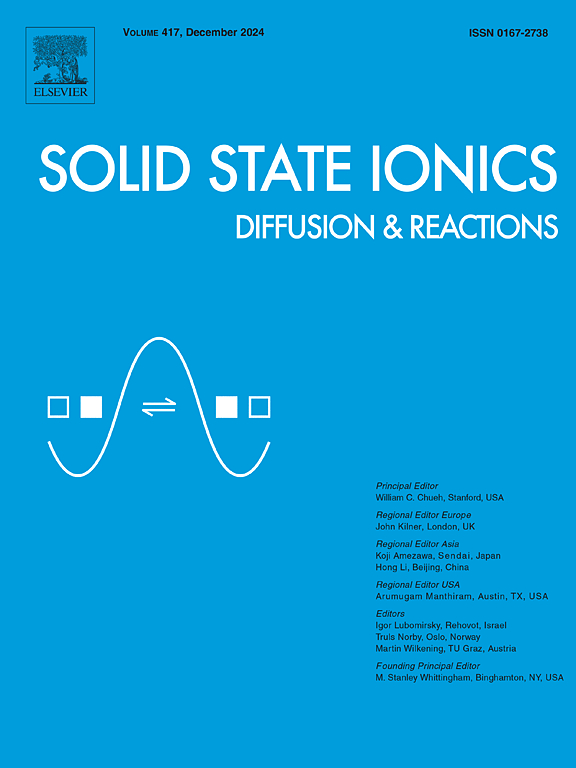When ions are in charge: Generalized ionic impedance spectroscopy for characterizing energy materials and devices
IF 3.3
4区 材料科学
Q3 CHEMISTRY, PHYSICAL
引用次数: 0
Abstract
Electrochemical Impedance Spectroscopy (EIS) is the conventional technique for studying the electrical response of individual materials or complete energy devices such as batteries, fuel cells, and supercapacitors. However, EIS has several limitations, including its spatial resolution, the description of ion insertion phenomena (especially when multiple ion species are involved), and the presence of porous electrodes. In this paper, Generalized Ionic Impedance Spectroscopy (GIIS) is proposed to address these issues by complementing traditional EIS to analyze ionic concentration changes under an AC voltage stimulus. A broad range of characterization techniques can be employed to analyze such ionic concentration variations, as these significantly modify the functional properties of the material, such as optical, magnetic, and electrical behavior. Some of these techniques also offer high spatial resolution, enabling lateral and depth profiling analysis. This study provides a theoretical framework for the development of GIIS in the field of energy, analyzing battery-like and fuel cell-like devices while resolving the major limitations of EIS mentioned above. The proven versatility of GIIS opens new pathways for the detailed characterization of energy materials and devices, advancing the understanding of low-frequency fundamental electrochemical processes and broadening the scope of their applications. While many of the discussed cases are experimentally validated, others are presented as perspectives of GIIS applications.
当离子控制时:用于表征能源材料和器件的广义离子阻抗谱
电化学阻抗谱(EIS)是研究单个材料或完整能源装置(如电池、燃料电池和超级电容器)的电响应的传统技术。然而,EIS有一些限制,包括空间分辨率,离子插入现象的描述(特别是当涉及多种离子时),以及多孔电极的存在。为了解决这些问题,本文提出了广义离子阻抗谱(GIIS),补充了传统的EIS来分析交流电压刺激下离子浓度的变化。广泛的表征技术可用于分析这种离子浓度变化,因为这些变化显著地改变了材料的功能特性,如光学、磁性和电学行为。其中一些技术还提供高空间分辨率,支持横向和深度剖面分析。本研究为能源领域GIIS的发展提供了理论框架,分析了类电池和类燃料电池设备,同时解决了上述EIS的主要局限性。经过验证的多功能性GIIS为能源材料和设备的详细表征开辟了新的途径,促进了对低频基本电化学过程的理解,拓宽了它们的应用范围。虽然许多讨论的案例都经过实验验证,但其他案例则作为地理信息系统应用的视角提出。
本文章由计算机程序翻译,如有差异,请以英文原文为准。
求助全文
约1分钟内获得全文
求助全文
来源期刊

Solid State Ionics
物理-物理:凝聚态物理
CiteScore
6.10
自引率
3.10%
发文量
152
审稿时长
58 days
期刊介绍:
This interdisciplinary journal is devoted to the physics, chemistry and materials science of diffusion, mass transport, and reactivity of solids. The major part of each issue is devoted to articles on:
(i) physics and chemistry of defects in solids;
(ii) reactions in and on solids, e.g. intercalation, corrosion, oxidation, sintering;
(iii) ion transport measurements, mechanisms and theory;
(iv) solid state electrochemistry;
(v) ionically-electronically mixed conducting solids.
Related technological applications are also included, provided their characteristics are interpreted in terms of the basic solid state properties.
Review papers and relevant symposium proceedings are welcome.
 求助内容:
求助内容: 应助结果提醒方式:
应助结果提醒方式:


